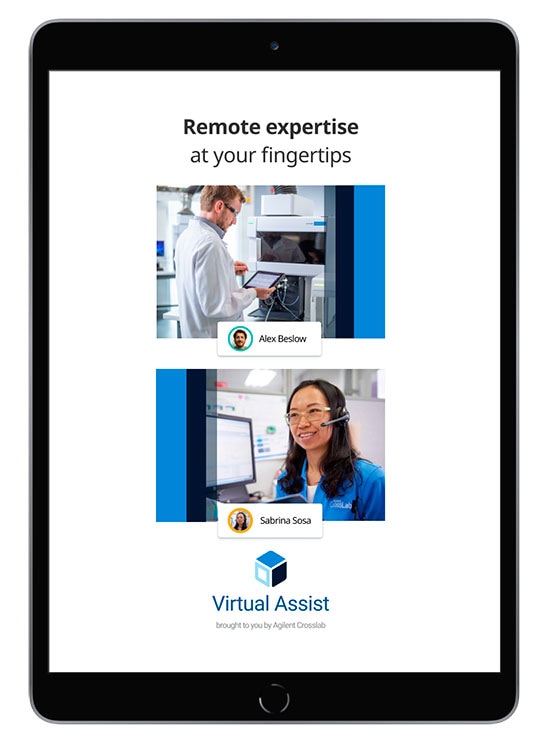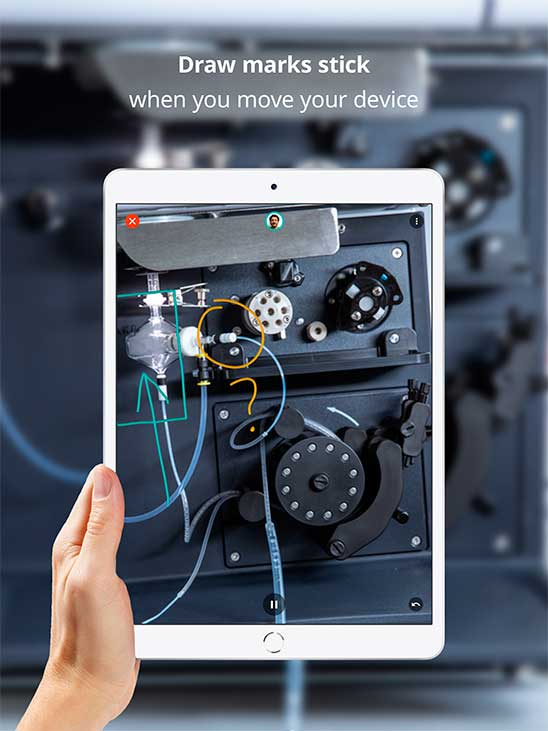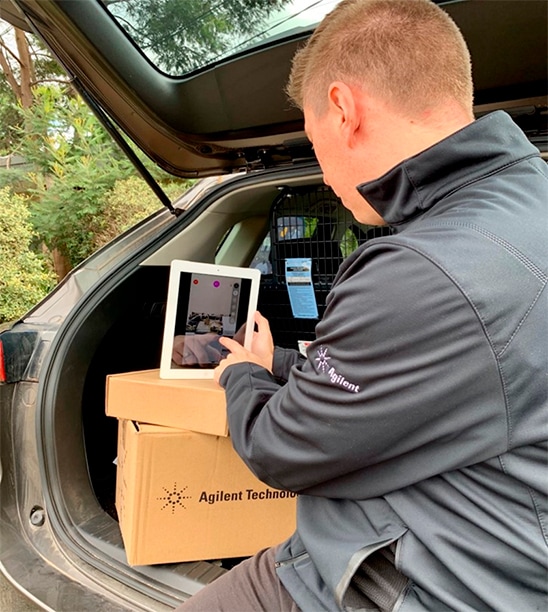
Augmented reality has been moving from the world of gaming and cinematography into the business arena, as innovators find ways to leverage the technology to improve communications, training, and customer support.
Agilent CrossLab worldwide service contact centers made the decision in late March to accelerate rollout of a new augmented reality technology platform, as a direct result of increased demand for remote support as customers moved to reduce on-site personnel. Soon after worldwide shutdowns began, the CrossLab Virtual Assist app began to be deployed as a way to provide enhanced remote support for our customers around the globe.
CrossLab Virtual Assist is a remote-assistance mobile app that connects two people via video. In addition to the remote view, it allows each person to draw digital annotations that appear to “stick” to an object in real time. Think of it as an interactive drawing tool, like those used in sports and weather broadcasts to highlight and diagram sports plays or weather patterns. This ability to highlight an object and provide clear instructions or direction – such as drawing a virtual arrow on a customer's instrument to indicate which direction to move a lever or knob – provides valuable capability for remote problem solving.

Agilent's investigation into this technology started several years ago through a CrossLab Group R&D proof-of-concept project. “Our R&D team tested several internal-use cases and we discussed the idea of using them externally in a customer-facing environment – that's where the pilot was born,” explains Matthew Waldron, contact center director for the South Asia, Japan, and Korea region. Because significant testing had already been done by Agilent, remote and field engineers were quickly able to begin effectively using the technology.
“The benefits of seeing what our customers see in real time are dramatic,” says Matthew. “The technology allows our experienced remote support engineers to do more in-depth troubleshooting and fault diagnosis, improve remote-call resolution, and reduce instrument downtime. The more information we're able to gather, the better chance we have of fixing the problem remotely.”
Matthew oversees a technical and experienced team of engineers whose sole function is to support customers by resolving issues remotely. Agilent first began to use CrossLab Virtual Assist as an early response to work restrictions. “We were able to include customers who are in duress and requiring assistance but we couldn't get to on-site,” Matthew said.
CrossLab Virtual Assist is a secure application that protects both customers and Agilent privacy with no audio, video, or image capture capabilities.

“Since it went live worldwide in April, we have had some great feedback regarding the value it provides in troubleshooting and reducing downtime. In most cases, the ability to avoid an on-site visit has been especially critical.”
The technology that powers Agilent Virtual Assist is changing the way Agilent can provide remote assistance around the world. “As an example, if you look at Australia, we have a very large geography, relatively small population, and a lot of remote sites due to our large install base in the resources and environmental-testing markets. This technology enables us to more effectively reach and serve customers who may be days away in travel time.”
More and more businesses are accelerating the adoption of innovative digital tools to help them stay productive with smaller on-site teams. CrossLab Virtual Assist helps them do that, and manage business risk, by keeping their instruments running. CrossLab Virtual Assist is a foundational digital platform that Agilent will continue to develop and enhance in the future. This technology is just one example of how Agilent will continue to put new technologies to work to improve scientific results and drive laboratory efficiency.